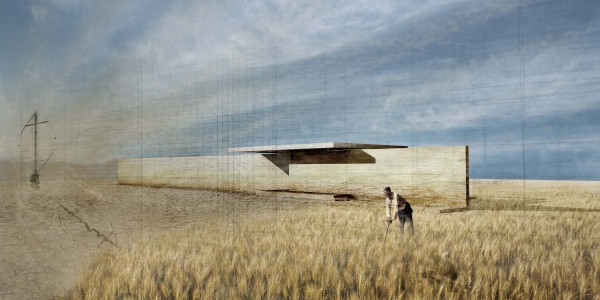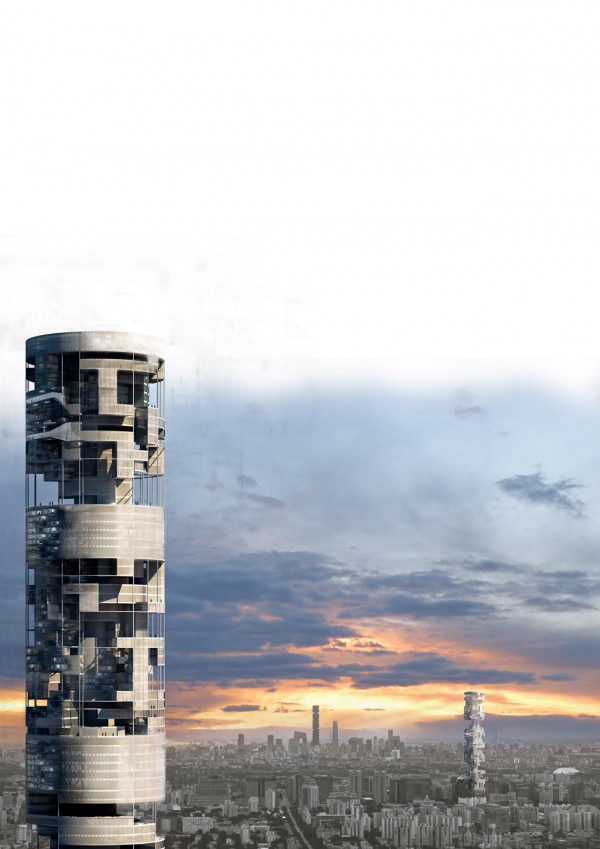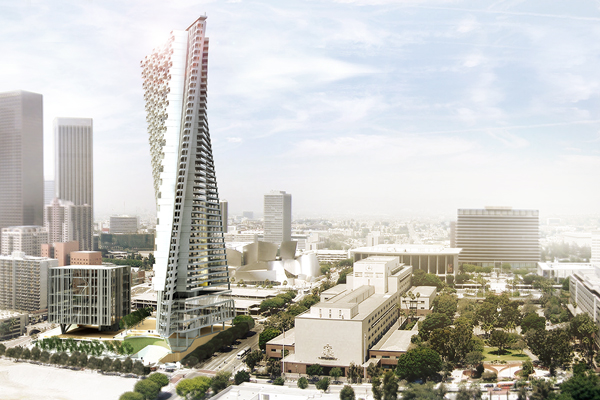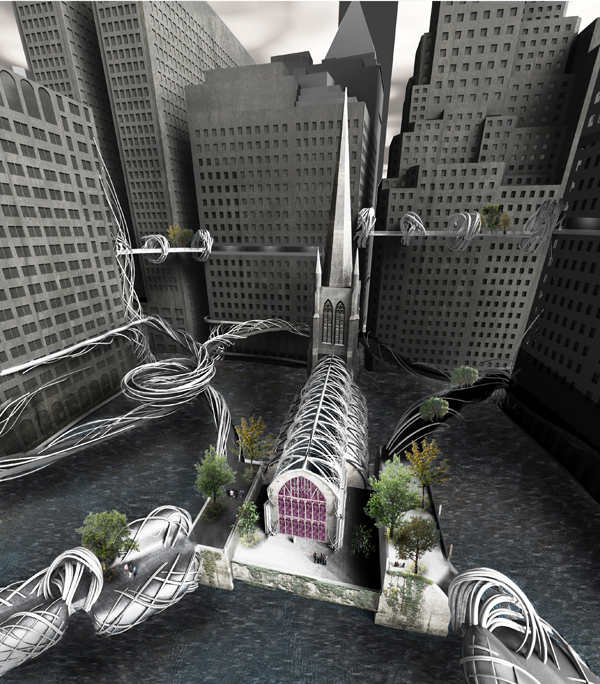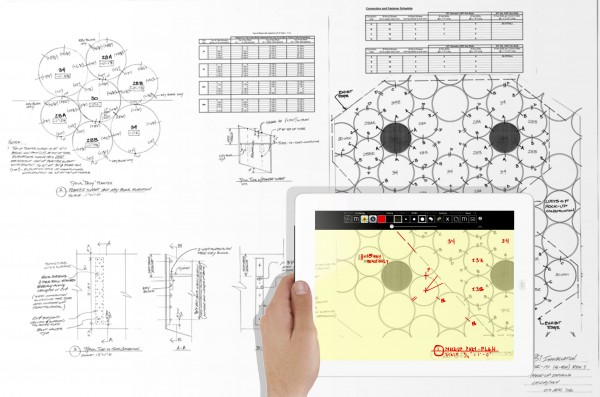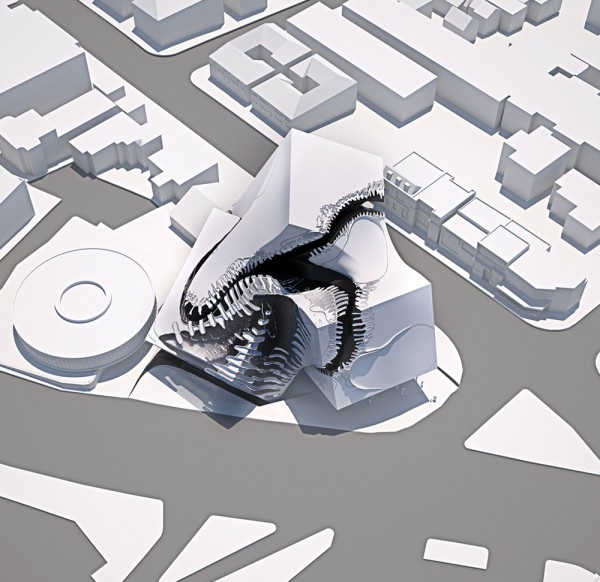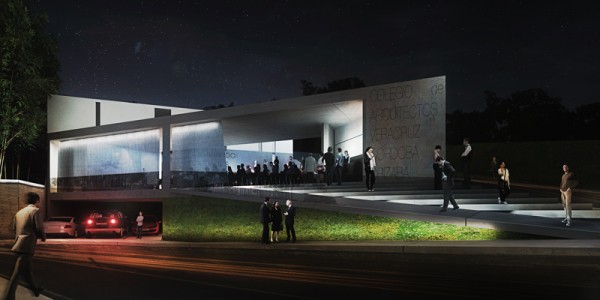According to the KMUTT Roadmap 2020, the university is aspiring to be one of the world class universities in the area of science and technology. For the Learning Innovation, the design by MAB Studio (Achawin Laohavichairat) used biomimicry as a natural inspiration to make the building harmony with the context. The building became a new transition of the university to transfer people to go to each building and to create the structure that can show the potential of the engineering because that is an image of the university, the biomimetic strategies that integrate form, material, and structure into a single process. We try to observe and study the behavior of natural form. The structure is derived from the geometry of an infinite array of the structure. The structure in the building is a light weight structure. There is main circulation in the building and each program was designed along the main circulation. There are three dimensional structures as a space truss module those transfer the load to each other. The structural module was created by a natural pattern. Read the rest of this entry »
KMUTT Learning Center is a Study on Biomimicry
KRob 2012: The 38th Annual Ken Roberts Memorial Delineation Competition
The Ken Roberts is the most senior architectural drawing competition currently in operation anywhere in the world.
In the late 1920’s, The Architectural League of New York established the first American competition for architectural drawings. It was named after Birch Long, one of their greatly talented and much-loved members who died while working on their 1927 exhibition. The “Birch Burdette Long Memorial Prize” was awarded annually until 1972, when it was discontinued for lack of interest in architectural illustration.
It seems a remarkable coincidence, indeed that a new annual event in far-away Texas was initiated the following year by the Dallas Chapter of the AIA, and was subsequently named for the untimely death of a respected colleague.
This event preceded by two years the 1975 founding of the British Society of Architecture Illustrators (SAI), the first of several national organizations to follow. In 1980 the Japanese Architectural Renderers Association (JARA) was initiated, followed by the 1986 founding of The American Society of Architectural Perspectivists (ASAP) in Boston by Frank Constantino, Steve Rich and myself. The NYSR in New York and the short-lived New Jersey Association were formed soon after ASAP. After the Koreans founded KAPA in 1990, the Australians became the “newest kid on the block” with their AAAI, which was organized [in 1995]. All this makes the Ken Roberts the most senior architectural drawing competition currently in operation anywhere in the world. – (article researched and written by Paul Stevenson Oles, FAIA) Read the rest of this entry »
City-like Supertall Skyscraper in Beijing, China
The most innovative architectural idea of this project is based on the possibility of a constantly changing skyscraper. It is all about developing a mutant vertical city building possibility, which answers to its time, place and inhabitants requirements. NODO project becomes much more than a skyscraper, it is a collective creation, a gauge, an urban infrastructure which evolves during its existence and adapts itself to its environment, receiving many functions and needs such as housing, offices, commercial and public spaces.
The project has two different parts: the permanent one and the mutable one. The vertical communications and facilities core (1), and standardized and mobile parts (2) on the other hand. An elevator inside (3) is in charge of transporting these prefabricated modules into their places inside the building, which are trucked from the factory. We can say that is the first proposal in the world of a “supertall” built with prefabricated modules, making it a flexible and versatile building. Betting into the future field of industrial architecture. This idea was the winner of the construction category of the competition. Read the rest of this entry »
Icon Square Houses: Peace Center, Community Center, and Eco Hotel
The Icon Square houses a Peace Center, Community Center, and Eco Hotel designed by Kyle Duvernay and Mike Knowlton in located in Bunker Hill, Los Angeles. A 150,000 sq/ft lot invites the public in by creating a corridor across the site, and by uplifting the ground floors for minimal building footprint. A systematic power generator consisting of over 200 vertical wind turbines was created for the public to view and interact with. The expression of the Eco Hotel is complimented by the purity of the Peace Center by allowing them to share a common goal of sustainability in the community. Read the rest of this entry »
Sensory City: Buildings Dynamic Morphologies
Xiaofeng Mei, project is located on a coastal area of Japan which is a site susceptible to environmental influences. The project is about the Dynamic Morphologies of a building’s envelope, and how architecture can move away from being fix to one that is in contrast shape. That shape is a response to the immediate environment. By applying flexible material and intelligent surfaces to new volumes affecting form and color of buildings, to activate the building’s envelope. Read the rest of this entry »
Responsive Infrastructure for a Sinking Manhattan
Responsive Infrastructure by Natalie Chelliah combats the paradoxical problem of lower Manhattan’s future; a city with a footprint slowly sinking into the ocean while its population consistently expands. Less Space : more people. An new city infrastructure is created that not only elevates the previously 2D sidewalks into a 3D matrix of interconnected bridges, but also provides endless possibilities of inhabitation and use. Read the rest of this entry »
Trace: The App Architects and Designers Have Been Waiting For
The Morpholio Project announces the launch of its second app, simply called Trace. The app explores the role of technology in the conceptual phase of the design workflow through a digital version of trace paper, and fosters communication amongst a global design culture. Trace, essential to any design or creative process, allows users to instantly draw on top of imported images or background templates, layering comments or ideas to generate immediate, intelligent sketches that are easy to circulate.
The uniqueness of Trace is most visible in two primary modes. One is communication, in which the user can simply trace over something in order to give feedback or convey information quickly, and graphically. The second is idea exploration. “You are plugging yourself into a recursive feedback loop, as you iteratively build up an idea, taking several passes at it,” says co-creator Mark Collins. Both allow creative cultures to maintain conceptual thinking as well as critical feedback throughout the design process.
Created by architects, Trace addresses a number of questions about how the proliferation of device culture, social networking, and cloud technology are changing the way designers work and connect on a daily basis. It has been predicted that in 2020, there will be 50 billion mobile internet connections worldwide, the equivalent of seven devices per person. It is crucial that experimentation and research that harnesses the power of these devices, and makes tools specifically for the design and creative fields, occur in tandem with this rapid evolution of culture and process. Read the rest of this entry »
New LACMA Campus Explores Designing a Surfaceless Structure
Surface has a long standing relationship with architecture and has been the primary component through which we communicate architectural composition. However the less obvious contributor that has had its hand in the making of architecture is the line. The line has typically been the ghostwriter for compositions that have been manifested through surface. However surface has the potential to become a canvas for other rhetoric outside those of the lines’ and can dilute the lines’ original aesthetic intention. The ambition of this project is to remove the surface avatar and reveal the line as the protagonist of this project.
A figural arrangement or movement is often illustrated with a line. Contextual forces are used to agitate the surfaces of the building where intense moments unrest yield an unraveling of the lines within. The relationship of line to line and surface to line presents opportunities for different types of spacial configurations for the program. The lines bundle and splay for varying degrees of saturation to fulfill a variety of spacial and programatic requirements. Read the rest of this entry »
Stitch Architecture: The In-Between Space
The project’s goal by Johannes Beck and Stefano Passeri was to combine techniques developed in an initial exploration on digital drawing, with a building-scale proposal sited in West Hollywood (Sunset Blvd, Holloway Drive intersection). The approach to the architecture starts from the main programmatic elements: office space, three auditoria, and a large public garden. We decided to give each of these ‘blocks’ an independent generic volume. The resulting intersecting boxes are connected via a language of ‘joints’ – a direct consequence of our intention to avoid booleaning the middle. A spacious, central, mostly interior void becomes the indirect by-product of this move. Read the rest of this entry »
Architects Association Headquarters in Veracruz, Mexico / lab07 + JMV Architects
The Architects’ Association of the State of Veracruz, Mexico launched an open architectural design competition for its headquarters to be located in the city of Cordoba. The mission of the Architect’s Association in Mexico is to promote the architectural profession developed within the highest standards of legal, moral, and responsible practice while promoting professional development, public outreach, design excellence and appreciation of the influence of architecture in shaping the city.
The project challenges involved not only a highly irregular site, but also a limited construction budget. The competition objectives looked for design proposals responding to open, flexible and rational schemes with strong dialogue with the urban structure and site. The architectural program involved a multipurpose space, stockroom, service area, office, workstations, meeting room and parking garage, among others. Read the rest of this entry »


